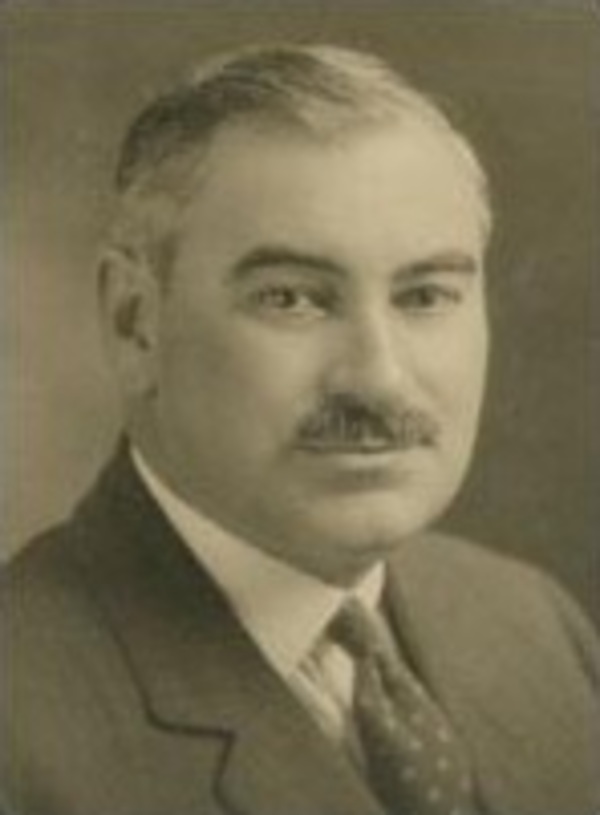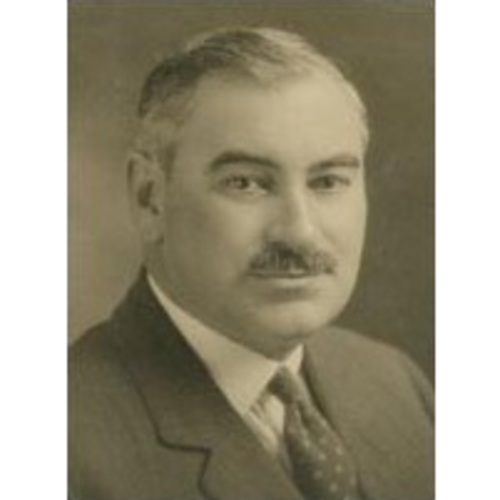
Source: Link
GARDNER, LINDSAY CANN, pharmacist, businessman, and politician; b. 27 Dec. 1875 in Milton (Yarmouth), N.S., son of George Hunter Gardner and Henrietta Frances Smith; m. 17 Oct. 1900 Eudora Adelaide Munro in Yarmouth, and they had two children, only one of whom survived to adulthood; d. 23 Aug. 1938 in Deerfield, N.S.
Lindsay Cann Gardner was the son of a boatbuilder from Chebogue and a local farmer’s daughter. He attended elementary and high school in Yarmouth and then, like many other ambitious young men from this busy southwestern Nova Scotia community, went to the United States for vocational education not available in the Maritimes. In 1896 he graduated on the honour roll from the Brooklyn College of Pharmacy in New York. Upon returning home, he was hired by Charles Churchill Richards, a drug manufacturer, wholesaler, and retailer. Gardner undertook a three-year assistantship with C. C. Richards and Company and was soon made manager of the business. By 1899 he had been registered as a member of the Nova Scotia Pharmaceutical Society. He became active in this regulatory body and would remain involved throughout his career, serving as an examiner starting in 1911, vice-president in 1917, and president in 1918; in June 1938, two months before his death, he would be elected honorary president. Few Nova Scotia pharmacists of Gardner’s generation had entered the profession with academic credentials comparable to his.
Since 1885 C. C. Richards and Company had owned the patent for Minard’s Liniment, a popular lotion for easing aches and pains. In August 1905 the Royal Securities Corporation Limited, which was backed by a syndicate of Halifax financiers and managed by William Maxwell Aitken*, acquired the patent and incorporated the Minard’s Liniment Company Limited. That same year Richards sold the rest of his Yarmouth enterprise to Gardner, who continued it as L. C. Gardner and Company. After Aitken relocated Royal Securities to Montreal in 1908, control of Minard’s devolved to a consortium of Yarmouth businessmen; both Gardner and Richards were directors. Gardner was appointed vice-president in 1918, and president and managing director in 1929, in which capacity he would serve until his death. In 1934 he would close L. C. Gardner and Company, and thereafter he divided his time and energy between Minard’s Liniment and politics. At some point he became a real-estate investor and speculator in partnership with his youngest brother, Arthur Wellesley; their firm, the Lyndsart, developed commercial property along Main Street in Yarmouth.
When the 1925 provincial election was called, Gardner decided to stand for the Liberals in Yarmouth County, probably at the behest of Ernest Howard Armstrong*, the former Yarmouth mla who had succeeded George Henry Murray* as premier in 1923. The Conservative tide was irresistible, and Gardner landed lowest on the poll. Three years later, however, he headed it, defeating the incumbent, Conservative cabinet minister John Flint Cahan. Gardner was appointed the party’s chief whip. After the Liberals returned to power in 1933 under Angus Lewis Macdonald*, he was chosen speaker of the House of Assembly. Re-elected in 1937, he was again named speaker; he died in office four months after the 1938 legislative session ended. He had been hospitalized for several weeks and upon release was under doctor’s orders to rest undisturbed. Having retreated to his summer cottage in Deerfield, he seemed to be recuperating well but took an abrupt turn for the worse.
Lindsay Cann Gardner was an important transitional figure between the Liberal ascendancies of Murray and Macdonald; the latter depended heavily on old hands in the party. Only his sudden demise prevented him from rising higher in government. Such was his prestige – in both 1933 and 1937 he had won the largest plurality in the province – that the November by-election to fill the vacancy caused by his death saw Liberal candidate Henry Arthur Waterman acclaimed. An entirely self-made man, Gardner had business interests beyond his pharmacy, becoming, for example, vice-president of the Yarmouth Shipbuilding Company Limited and a director of the Cranberry Head Fish Trap Company. Among his associational links were the masons and the Rotarians. He was evidently fond of sport and outdoor pursuits: he belonged to the local curling and golf and country clubs as well as to the Western Nova Scotia Forest, Fish, and Game Association. As a member of both the Yarmouth Board of Trade and the Nova Scotia Motor League, he promoted tourism in the province. Mindful of his roots, Gardner was particularly interested in the agricultural and fishing industries. In the house he championed the cause of farmers and fishermen on whose shoulders the economy of his largely rural, oceanside constituency depended. To the end of his life he was a director of the Yarmouth County Farmers Association and faithfully attended its regular meetings.
Only Lindsay Cann Gardner’s legislative papers, dating from the time when he was chief whip of Nova Scotia’s Liberal Party (1929–33), are known to have survived. The records of L. C. Gardner and Company, which was closed in 1934, are lost, as apparently are those of the Minard’s Liniment Company Limited, which was sold to Beechman Products Limited and closed in 1960. Records of the Nova Scotia Pharmaceutical Soc. (the Nova Scotia College of Pharmacists since 2001) during Gardner’s time are available both on microfilm and in the original print format at NSA (mfm. 14752–56 and MG 20, vol.643). Gardner’s diploma from the Brooklyn College of Pharmacy is in the J. Gordon Duff Pharmacy Museum, College of Pharmacy, Dalhousie Univ. (Halifax).
NSA, mfm. 10893 (fonds for A. S. Macmillan); MG 2, vols.1–62A (E. H. Armstrong fonds), vols.1297, 1478–1537 (Angus L. Macdonald fonds), and vols.1863–66 (Lindsay Cann Gardner papers); MG 3, vols.350–51 (E. H. Armstrong fonds); “Nova Scotia hist. vital statistics,” Lindsay Cann Gardner, death certificate, 1938: www.novascotiagenealogy.com (consulted 11 Oct. 2016). Yarmouth County Court of Probate (Yarmouth, N.S.), Estate papers, no.2190. Halifax Chronicle, 1925–38. Halifax Herald, 1925–38. Yarmouth Herald, 1925–38. Leaders of Nova Scotia, 1936: a “who’s who” of the political, professional, commercial and moral leaders of the province, ed. R. B. Blauveldt (Yarmouth, 1936). N.S., House of Assembly, Journals and proc., 1906, app.12: 114–15.
Cite This Article
Barry Cahill, “GARDNER, LINDSAY CANN,” in Dictionary of Canadian Biography, vol. 16, University of Toronto/Université Laval, 2003–, accessed January 2, 2026, https://www.biographi.ca/en/bio/gardner_lindsay_cann_16E.html.
The citation above shows the format for footnotes and endnotes according to the Chicago manual of style (16th edition). Information to be used in other citation formats:
| Permalink: | https://www.biographi.ca/en/bio/gardner_lindsay_cann_16E.html |
| Author of Article: | Barry Cahill |
| Title of Article: | GARDNER, LINDSAY CANN |
| Publication Name: | Dictionary of Canadian Biography, vol. 16 |
| Publisher: | University of Toronto/Université Laval |
| Year of publication: | 2018 |
| Year of revision: | 2018 |
| Access Date: | January 2, 2026 |



